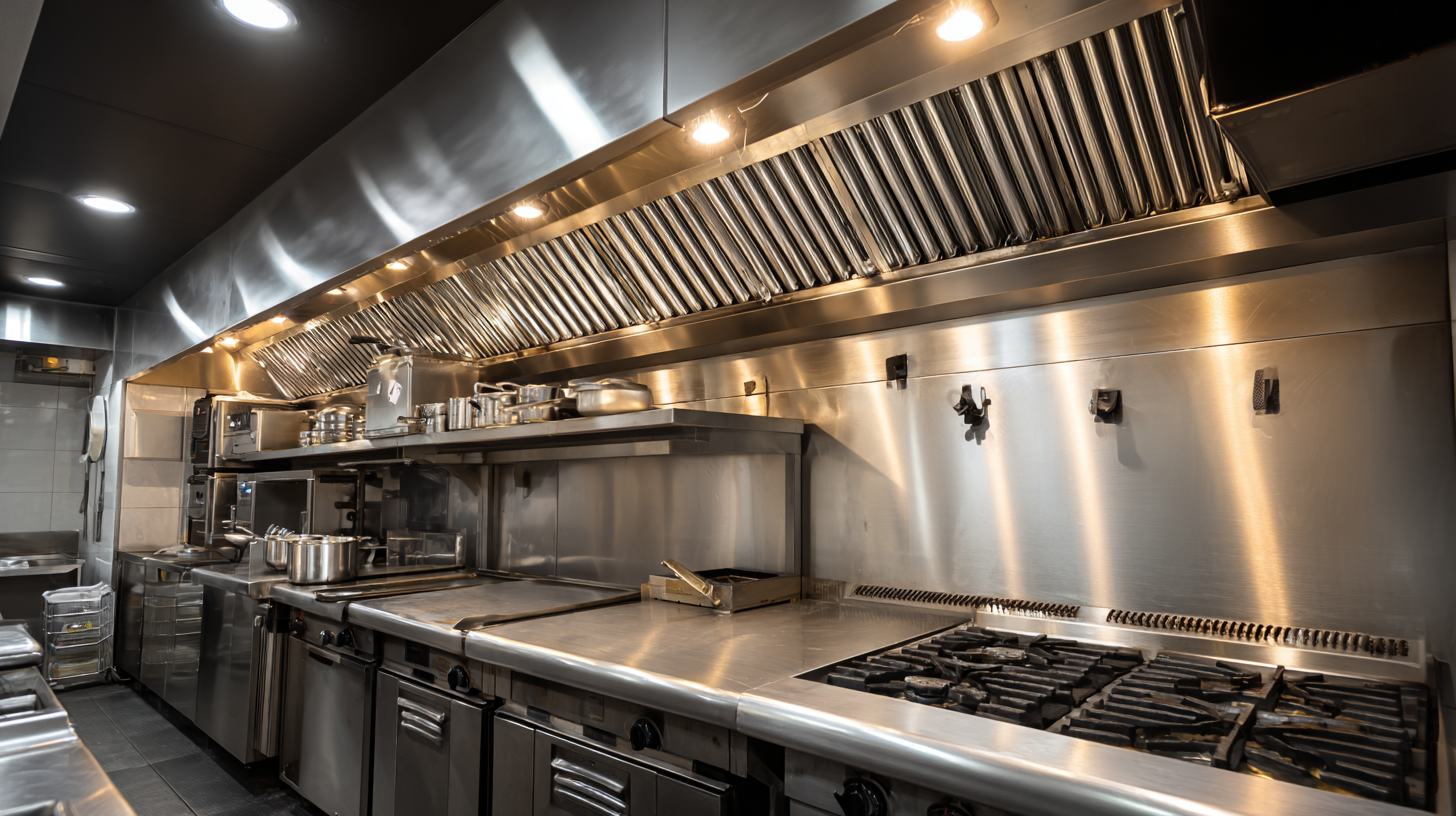Quality first, innovative service
Leave Your Message
-
Phone
-
E-mail
-
Whatsapp
-
Whatsapp

-
Wechat17786531544
-
Wechat

Quality first, innovative service


 In the quest for a healthier home environment, the significance of a
Kitchen Exhaust Fan cannot be overstated. Often overlooked,
this essential appliance plays a pivotal role in enhancing indoor air quality by effectively
removing unwanted pollutants, moisture, and odors generated during cooking. As modern kitchens become the heart
of our homes, where culinary creativity flourishes, the need for adequate ventilation
is paramount.
In the quest for a healthier home environment, the significance of a
Kitchen Exhaust Fan cannot be overstated. Often overlooked,
this essential appliance plays a pivotal role in enhancing indoor air quality by effectively
removing unwanted pollutants, moisture, and odors generated during cooking. As modern kitchens become the heart
of our homes, where culinary creativity flourishes, the need for adequate ventilation
is paramount.
This comprehensive guide delves into the various benefits of Kitchen Exhaust Fans, shedding light on how they not only improve air quality but also contribute to a more pleasant cooking experience. By understanding the importance of proper ventilation, homeowners can make informed choices about their kitchen setups, ensuring a safer and more enjoyable space for all.
Kitchen exhaust fans play a critical role in maintaining indoor air quality by effectively eliminating airborne pollutants generated during cooking. According to the U.S. Environmental Protection Agency (EPA), pollutants such as particulate matter, carbon monoxide, and volatile organic compounds (VOCs) can accumulate in the kitchen environment, leading to potential health risks. A properly installed exhaust fan can remove up to 80% of these pollutants, significantly reducing the concentration of harmful substances in the air.
Research from the American Society of Heating, Refrigerating and Air-Conditioning Engineers (ASHRAE) stresses that cooking generates heat and moisture, which can increase humidity levels and promote mold growth if not adequately ventilated. Ventilation provided by kitchen exhaust fans not only helps to control these moisture levels but also assists in regulating indoor temperature, ensuring a comfortable cooking environment. By promoting better air circulation, these fans contribute to a healthier atmosphere, making them an essential component of any modern kitchen design focused on indoor air quality.
Kitchen exhaust fans play a crucial role in maintaining indoor air quality by removing undesirable pollutants, moisture, and cooking odors. Understanding the key components of these fans helps to appreciate how they function effectively in a kitchen environment.
One of the main components is the fan motor, which powers the blades that create airflow. Depending on the design, these motors can be located inside the unit or externally, contributing to more efficient ventilation. The fan blades themselves are engineered to optimize air movement and minimize noise. Additionally, the ductwork plays a significant role in directing the airflow outside, ensuring that contaminants are expelled rather than circulating back into the kitchen. Properly designed duct systems, including the use of filters, can capture grease and fine particles, thereby enhancing the exhaust fan's effectiveness.
Another vital element is the control system, which allows users to adjust the fan speed according to cooking intensity. Some modern kitchen exhaust fans come equipped with sensors that automatically adjust the settings based on temperature or humidity levels, ensuring that air quality is continuously monitored and maintained. Together, these components contribute significantly to reducing indoor air pollution, making kitchen exhaust fans an essential feature in any home.

Kitchen exhaust fans play a critical role in maintaining indoor air quality by effectively removing smoke, steam, and cooking odors. There are various types of kitchen exhaust fans, each designed for specific needs and kitchen layouts. The most common types include ducted, ductless, and wall-mounted exhaust fans. Ducted fans vent air outside, which is ideal for eliminating pollutants and humidity, making them a popular choice for professional kitchens. On the other hand, ductless fans recycle the air through filters before releasing it back into the kitchen. While they are easier to install and maintain, they may not be as effective in removing all contaminants, particularly in high-cooking environments.
Another important consideration is the placement and power of the exhaust fan. Range hoods, typically installed above cooking surfaces, provide a concentrated airflow that captures grease and smoke directly at the source. The impact of these fans on air quality can be significant; for example, a powerful fan can reduce particulate matter by over 80%, contributing to a healthier cooking environment. Choosing the appropriate type and size of an exhaust fan not only enhances comfort but also reduces the risk of respiratory issues and improves overall kitchen hygiene. Proper ventilation is essential for a well-functioning kitchen and a vital aspect of maintaining indoor air quality.
Proper maintenance of kitchen exhaust fans is crucial for ensuring optimal performance and enhancing indoor air quality. One of the essential tips for upkeep is regular cleaning. Grease and debris can accumulate over time, leading not only to reduced efficiency but also to potential fire hazards. It is recommended to clean the filters monthly, using warm, soapy water or a specialized degreaser. Additionally, make sure to check the fan blades and housing for any buildup, which can hinder airflow.
Another important aspect of maintenance is checking the electrical components. Over time, wiring can wear out or become damaged, posing safety risks. Periodically inspect the cord and plug for fraying or any signs of wear. If any issues are detected, it’s best to consult a professional for repairs. Lastly, don't overlook the importance of ensuring that the exhaust fan is vented properly to the outside. Blocked vents can lead to poor air circulation and may negate the benefits of having the exhaust fan installed. Regular inspections and maintenance will ensure that your exhaust fan operates efficiently, contributing to a healthier kitchen environment.
Indoor air quality can be significantly compromised by common pollutants such as smoke, grease, moisture, and volatile organic compounds (VOCs) that emanate from everyday cooking activities. These pollutants not only affect the comfort of a home but can also lead to health issues over time, including respiratory problems and allergies. Kitchen exhaust fans are designed to tackle these issues head-on by effectively removing these harmful substances from the kitchen environment.
When kitchen exhaust fans operate, they draw in contaminated air and expel it outside, significantly reducing exposure to pollutants. For instance, when cooking fatty foods, the fan helps eliminate grease particles that can settle on surfaces and contribute to a buildup of harmful bacteria. Additionally, by expelling steam and moisture, exhaust fans minimize the risk of mold growth, which thrives in humid conditions. By maintaining a continuous airflow, these fans promote better ventilation, ensuring that fresh air replaces stale, polluted air, thus enhancing overall indoor air quality and creating a healthier cooking environment.

